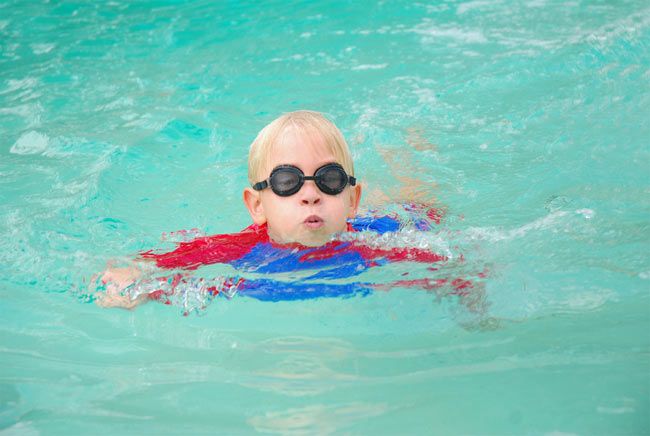'Crypto' Parasite Outbreaks Increasing in Pools Across US

A diarrhea-causing parasite that is often transmitted through water is causing an increasing number of outbreaks in U.S. pools and spas, according to a new report from the Centers for Disease Control and Prevention.
From 2011 to 2012, there were 90 outbreaks and 1,788 cases of any illness linked to using recreational water, according to information reported from 32 states and Puerto Rico. Most of these outbreaks (77 percent) occurred in water that was treated (for example, with chlorine or bromine), such as pools, spas and hot tubs, while 23 percent of the outbreaks involved untreated water, such as lakes and oceans, the CDC said.
Among the outbreaks linked to treated water, more than half were caused by a parasite called Cryptosporidium, also known as Crypto, which causes diarrhea, the CDC said. This parasite is able to survive even in chlorine-treated pools for more than 10 days. Crypto was responsible for more than 90 percent of pool outbreaks that occurred during summer months.
Since 1988, when the very first Crypto outbreak tied to recreational water use was reported, the number of these outbreaks has increased, the researchers said.
A report last year found that, from 2009 to 2010, Crypto caused 24 outbreaks in treated recreational water, compared with 36 outbreaks from 2011 to 2012.
Researchers don't know for sure why they're seeing an increase in Crypto outbreaks. One possibility is that there has been an increase in awareness about swimming-related illnesses, so people are reporting them more, said study co-author Michele Hlavsa, an epidemiologist with the CDC's Healthy Swimming program.
When people get sick with diarrhea, they often think that something they ate caused the symptoms. But now, "people are realizing it's not necessarily only about where they ate or what they ate. It could be about where they went swimming," Hlavsa said. [7 Common Summer Health Concerns]
Sign up for the Live Science daily newsletter now
Get the world’s most fascinating discoveries delivered straight to your inbox.
While Cryptosporidium outbreaks have increased, researchers have also found that, in general, the diversity of infectious germs causing outbreaks in treated swimming areas has decreased. This is likely because swimming venues are using chlorine and bromine disinfectants, and maintaining the proper pool PH — measures "which are well documented to inactivate most infectious pathogens within minutes," the researchers said.
Because Cryptosporidium can't be killed by chlorine and water filters, "we're really asking swimmers to keep Cryptosporidium out of the water in the first place," Hlavsa told Live Science.
To prevent Crypto and other illnesses linked with swimming, the CDC recommends that people not swim if they have diarrhea, and stay out of the pool for two weeks after their diarrhea stops if they were diagnosed with Crypto. People should also shower before swimming, take their children on frequent bathroom breaks when swimming change diapers in the bathroom rather than by the pool and avoid swallowing pool water, the CDC says.
The agency also recommends that water be treated with ultraviolet light or ozone to inactivate Crypto at pools where surveillance data indicates there is an increased risk for transmission of the disease.
In addition, researchers can use genetic sequencing to identify different species of Crypto, which can help officials better understand which species are causing outbreaks, and develop guidelines to prevent these outbreaks, the CDC said.
The report is published this week in the CDC journal Morbidity and Mortality Weekly Report.
Follow Rachael Rettner @RachaelRettner. Follow Live Science @livescience, Facebook & Google+. Original article on Live Science.

Rachael is a Live Science contributor, and was a former channel editor and senior writer for Live Science between 2010 and 2022. She has a master's degree in journalism from New York University's Science, Health and Environmental Reporting Program. She also holds a B.S. in molecular biology and an M.S. in biology from the University of California, San Diego. Her work has appeared in Scienceline, The Washington Post and Scientific American.










